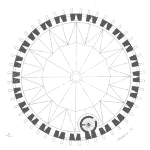
With the growing trend of Internet of Things (IoT), Artificial Intelligence (AI) and Data Science in Industrial Asset Management domain; I just wonder whether the Plant Engineers will still be keeping tab on the ‘Operating Context’ of their assets to extract real value from these revolutionary technologies or will just rush like lemmings to adopt them.
This reminds me of the following anecdote narrated by a Software Engineer working for the NASA.
Requirement: Print out all errors messages.
Requirement: Output an error message when the printer is out of paper.
Result: First message printed when paper was loaded. “The printer is out of paper.”
Despite the innovative technological advances there is still a huge question remained to answer. Why in most cases, innovation fails? The answer lies in lack of sustainable business value of these innovations. And business value is very much driven by the operating context of the organization. If there is a lack of understanding on that part, you will miss the business value.
Any technology adopted without giving due consideration to the operating context of an organization and its assets will not yield results. This requires that:
- business needs are well understood by everyone involved
- the fundamentals of operations, maintenance and reliability should take precedence over technology
Technology should only be treated as means for extracting value out of the assets. It should be the one serving our assets. Not the other way round. This increases the significance of Plant Engineer’s expertise, skills and experience. They are the ones who should be driving the efforts for innovation and coming up with applicable use cases of the technology within their operating context.
Make the technology fit to your operating context. It is and should be by nature, tailor-made. This also requires organizations to be persistent and patient in their efforts. Treat innovation as a journey and hold a long-term vision towards the intended goals.
For the technology businesses, there are important lessons to be learnt as well. In order to succeed in the b2b markets, technology companies should always listen to their Clients and the Subject Matter Experts within the specific industries and areas of operation.
Very good article.. yes, new technologies need to be shaped to cater specific needs to add value and smoothness in operation to be more precise & productive.. to make systems lean and easily handled by different level of intellect.. keep the thought process sharing Usman Mustafa.. it is always worth reading to your articles.. wish yoj mors highs..